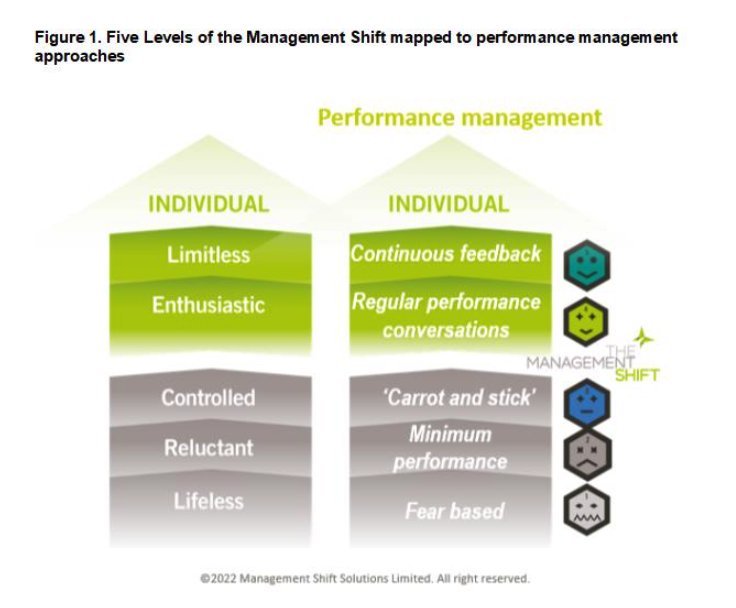Are performance reviews telling us what we need to know?
- 7 Min Read
Professor Vlatka Ariaana Hlupic argues that the traditional employee performance review model is outdated and and does not reflect the way employees work nowadays. We should move towards a new system that gives more timely feedback and helps employees thrive
- Author: Vlatka Ariaana Hlupic
- Date published: Jun 20, 2022
- Categories

Performance reviews used to be a yearly event where employees would get feedback on their work. However, this model is outdated and doesn’t reflect the way employees work nowadays.
We need a new model that is more related to continuous feedback, peer coaching, with accountability, flexibility, and opportunities for growth, learning and development. This would not only improve engagement and productivity, it would also help with talent retention and attraction, which is very important now, in the age of the Great Resignation.
Many companies are now moving towards a more continuous feedback model, which is more related to peer coaching. This allows employees to receive feedback on a more regular basis and makes it easier to correct any issues before they become a problem.
In a traditional office setting, reviews are typically conducted annually or semi-annually. But in a remote or hybrid workplace, where team members are working from different locations and time zones, this type of review simply is not feasible.
The 3 key reasons why traditional performance reviews do not work in hybrid environments include:
- They are often based on outdated information.
- They are conducted in a vacuum, without considering the work environment or team dynamics.
- They are often based on a bell curve, where a small percentage of employees are rated as outstanding, a larger percentage are rated as average, and a small percentage are rated as not meeting expectations. This can lead to a feeling of competition among employees, rather than cooperation. It is important to find a way to conduct performance reviews that is efficient and effective.
In order to move away from traditional performance reviews, organisations need to adopt a new model that is more focused on continuous feedback, reverse feedback, peer coaching, autonomy and accountability. This new model should also be flexible and should allow for opportunities for employees to give and receive feedback on a regular basis.
Additionally, performance management should be based on the principle of mutual respect and should allow for employees to have a voice in their own development.
Performance reviews can be limiting if not done correctly. They should be part of a continuous feedback loop, providing regular performance conversations between managers and employees. This way, employees are constantly aware of their progress and where they need to improve.
Managers need to be flexible in their approach to talent management, recognising that each employee has unique talents and needs. The goal should be to help employees reach their full potential, whatever that may be.
The 5 levels of The Management Shift can provide a framework for organizations to move away from traditional performance reviews, and towards a more effective system that is focused on continuous feedback, peer coaching, and accountability.
Based on the years of my interdisciplinary research, I developed this framework which tracks each stage of personal and organisational growth. This model shows that there are five levels of our individual mindset, and each level corresponds to a different organisational culture. For both groups and individuals to transform significantly, they must shift from Level 3 to Level 4 or go through The Management Shift, also known as the ‘Big Shift’.
These 5 Levels can also be mapped to the type of performance management approaches used within an organisation, as shown in Figure 1.

Level 1
At Level 1, dominant mindset is ‘lifeless’ and organisational outlooks are ‘apathetic’. Little gets done as people are too depressed to do anything and fear-based decision making cripples any chance of progress. This level is often the result of economic instability, natural disasters, political unrest or a result of destructive leadership and toxic organisational culture. In Level 1 organisation, any performance management would be fear based, people would loose their jobs (or even worse, their health) easily.
Level 2
At Level 2, the individual mindset is ‘reluctant’, and culture is ‘stagnating’. In Level 2 organisation, people do the bare minimum to get paid for their work. Performance management is not effective, employees are lethargic, leaders are not inspirational and they are unable to inspire or demand good performance. Performance management is stuck in a loop of perpetuating minimum performance.
Level 3
At Level 3, the individual mindset is ‘controlled’ and the organisational culture is ‘orderly’. Leadership style relies on traditional hierarchical command-and-control, micromanagement and centralised decision making. Performance management is based on ‘carrots and sticks’ approach to motivate people. Performance is closely monitored and employees are rewarded or punished as needed to ensure that they comply with the organisation’s rules and regulations.
Level 4
When it comes to organizational performance, engagement, and resilience, a critical mass of workers moving from a Level 3 to Level 4 system can make all the difference. At Level 4, the mindset is ‘enthusiastic’ and culture is ‘collaborative’. The keywords for this Level include trust, transparency, purpose, teamwork, collaboration, having fun working and making a difference for the society. This leads to a step change increase in performance, engagement, innovation and profit. Performance management is based on regular two-way performance conversation and feedback which can be acted on immediately,
Level 5
At Level 5, the mindset is ‘limitless’ and culture is ‘unbounded’. At this level, highly innovative teams work intensively until they achieve a major breakthrough in innovation, solving some big, often global, problems for humanity. At this level, the levels of intrinsic motivation are high, high performance is strived for by default and performance management is based on continuous feedback to achieve or maintain excellence.
Studies have shown that when workers are organized in a lean way – in small groups called cells – they are able to respond quickly and efficiently to customer demands, and this way of working is often used in Level 4/5 organisations. In fact, many companies have seen such an improvement in performance, resilience, and engagement after they have made the move from a Level 3 to Level 4 system. This shift can be difficult for some organisations, but the benefits are limitless.
As workplaces continue to evolve, HR leaders and CEOs must take specific actions to help their company make the shift to a Level 4/5 performance culture to keep existing and attracting new talent.
Here are some specific actions HR leaders can take to accelerate the transition to Level 4 and retain and attract new talent.
- Create a two-way communication stream where employees are more relaxed. Encourage employees to share feedback with you in order to improve the system.
- Ensure that the results of employee engagement surveys translate into action that leads to an improvement of the issues identified.
- Empower customer-facing (and other) employees to make decisions where they are well informed about the matter in question.
- Encourage experimentation with innovative ideas to contribute to the development of new ideas.
- Create formal processes to support employee training and well-being.
- Foster collaboration and face-to-face engagement within hybrid work arrangements to encourage employee relationships.
- Define a higher purpose of a company to provide employees with a sense that they are improving the world by working for your organisation rather than somewhere else.
- Establish new processes for regular feedback instead of a yearly appraisal system.
In conclusion, performance reviews are no longer telling us what we need to know about our employees. The system is outdated and does not work for today’s workplace. We should move towards a new system that gives us more timely feedback and helps employees thrive.
_____________________________________
Professor Vlatka Ariaana Hlupic is Professor of Leadership and Management atHult International Business School (Ashridge) and founder and CEO of Management Shift Solutions Limited.









